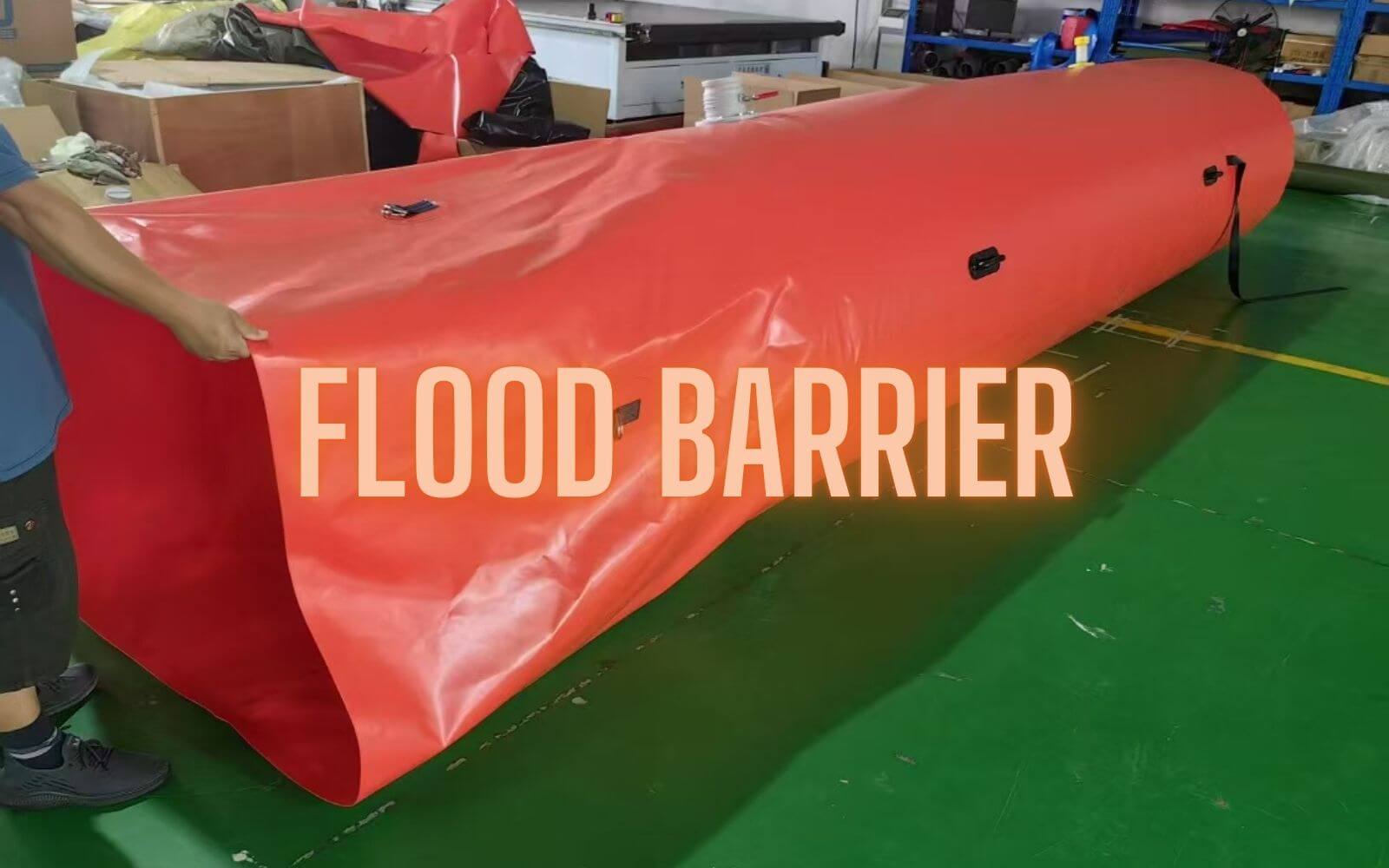FLOOD BARRIER
Flooding causes billions in damages each year, making flood barrier protection for properties and life safe is important to the area which may effect by the flood. This guide explores flood barrier types, key benefits, and real-world applications – specially focus on innovative inflatable barriers using flexible bladder tank technology that are revolutionizing flood prevention.
What Are Flood Barriers?
Flood barriers are physical obstacle structures which design to prevent or mitigate water intrusion. We simply classify them as permanent installations and temporary solutions, with modern systems incorporating strong materials like flexible bladder tanks for rapid deployment.
Types of Flood Barrier
1. Permanent Flood Barriers
Flood Walls: Solid concrete/steel structures.
Levees: Earthen embankments along waterways
Floodgates: Fixed installations at entry points
2. Temporary/Deployable Barriers
Demountable Aluminum Barriers:
Interlocking panel systems
Inflatable Barriers (Flexible Bladder Tanks):
How They Work:
These use water flexible bladders that automatically expand before or when flooding begins
Key Advantage:
When empty, it can be stored compactly and deploy in minutes without heavy equipment for installations.
Sandbag Alternatives:
Polymer tubes or water-filled barriers
Key Benefits of Modern Flood Barriers
Superior Protection:
Inflatable bladder barriers conform perfectly to uneven surfaces, as the flexibility features.
Making the flexible flood bladder to have watertight seals better than rigid barriers, which can help to provide better performance on avoiding the movement once the flooding flow happened.
Rapid Deployment:
Flexible systems can be installed 10x faster than sandbags with less labor involved and heavy machines requested.
If the water flow sensors added, the inflatable tanks can trigger self-deploy when sensors detect rising water.
Space-Efficient Storage:
Bladder tanks fold down and compact to 10% of deployed size
Ideal for properties with limited storage space, and where the warehouse storage saving needs.
Reusable & Durable:
High-quality PVC/TPU and reinforced production technology makes the serve life of bladders lasting 10+ years.
Besides the long lifespan, the flexible bladder is easy to clean and store after use.
Cost-Effective:
Eliminate labor costs of sandbag filling and largely reduce the labor needed during deployment.
Because of the long time lifespan, this helps to reduce long-term replacement costs.
Inflatable Barrier Advantages Using Flexible Bladder Tanks
Modern inflatable flood barriers that utilize flexible bladder tank technology offer game-changing advantages for flood protection. These systems represent the cutting edge of temporary flood defense, combining military-grade engineering with practical civilian applications. Here’s why they’re becoming the preferred solution for property owners and emergency responders:
1. Unmatched Deployment Speed
Self-activating models inflate liquid automatically when water sensors detect rising levels, this filling method needs to add the water sensor and water pumps.
Manual systems can place in less than15 minutes (vs 4+ hours for equivalent sandbag walls)
No heavy equipment needed – a single person can deploy 50+ feet of protection.
Real Example: During the 2023 Rhine River floods, German authorities deployed 2 miles of bladder tank barriers in under 3 hours, protecting entire neighborhoods.
2. Perfect Adaptive Sealing
Unlike rigid barriers, flexible bladders:
Conform to uneven surfaces (asphalt, gravel, cobblestones)
Self-adjust to ground irregularities with continuous water pressure to cover each uneven corners.
Eliminate leakage gaps that plague traditional flood panels.
Technical Advantage: The water weight in bladder releasing pressure that causes flooding actually improves the seal – as water rises, it forces the bladder tighter against protected surfaces.
3. Customization Options
Flexible bladder tanks can be various to meet specific applications:
| Customization Feature | Applications |
| Variable Heights (6″ to 10′) | Tailor protection to your flood risk level |
| Specialty Materials | Chemical-resistant coatings for industrial sites |
| Modular Connections | Create continuous barriers of any length |
| Anchoring Systems | Pavement slots, sandballast channels, or magnetic bases |
| Color Options | Camouflage for aesthetic blending or high-vis for safety |
Case Study: A Venice hotel chain customized 36″ high bladder barriers with marble-patterned PVC to match their historic architecture while providing flood protection.
4. Space-Efficient Storage
Compact folding: 100 linear feet of barrier stores in a 0.12m3 carton box.
Lightweight: 50% lighter than equivalent aluminum systems.
Multi-use potential: Same bladders can serve as emergency or temperary water storage tanks when not in flood use.
Storage Advantage: Unlike sandbags that degrade when stored, bladder tanks have over 10 years shelf life when properly maintained.
5. Military-Grade Durability
Modern bladder tanks feature:
Triple-layer PVC with UV inhibitors (tested to 10,000+ deployment cycles)
Abrasion-resistant bases for concrete/pavement contact
Temperature tolerance from -40° to 90 celcius degrees.
Puncture resistance equivalent to whitewater rafting gear
Certifications:
✔ ISO 9001.
✔ CE marked for European flood standards
6. Cost-Effectiveness
Compared to traditional rigid systems or sandbags:
60% lower upfront cost than permanent flood walls.
80% savings vs sandbag labor costs over 10 years lifespan.
Reusable for decades with proper maintenance.
7. Environmentally Friendly
No disposable materials (unlike sandbags)
Fish-safe designs for aquatic environments
Recyclable materials at end-of-life
Prevents chemical runoff by containing floodwaters
Why Choose Flexible Bladder Tank Barriers?
For most residential and commercial applications, these systems provide the perfect balance of:
✔ Affordability (30-60% cheaper than permanent installations)
✔ Performance (Tested to withstand 5+ psi water pressure)
✔ Convenience ( Compacted&Stores easily until needed)
✔ Customization (Tailored to your property’s exact needs)
Professional Tip: For maximum effectiveness, combine bladder barriers with:
Proper site preparation (clearing debris from barrier line)
Regular inflation system checks
Annual material inspections
Choosing the Right Flood Barrier
For most residential applications, inflatable bladder barriers offer the best combination of:
✔ Affordability (30-50% cheaper than permanent installations)
✔ Effectiveness (Tested to withstand 3+ feet of water pressure)
✔ Convenience (Stores easily in garage or basement)
Conclusion
While traditional flood barriers remain important, inflatable bladder tank barriers represent the future of flood protection – combining rapid deployment, perfect sealing, and compact storage. Whether you need permanent community flood walls or temporary protection for your home, understanding these systems is key to effective flood preparedness.








